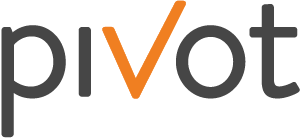With the bulk of Baby Boomers reaching retirement in the next decade — and needing or desiring specific housing or care — the senior living industry has numerous opportunities on the horizon. At the same time, the industry faces the short-term challenge of filling its communities. According to the National Investment Center for Seniors Housing & Care, assisted living occupancy in the first quarter of 2018 dipped to 85.7 percent nationwide, down 1.3 percent from a year ago. Substantiating those numbers, attendees at the recent Senior Care Marketing and Sales Summit in Chicago said lead generation was their top challenge.
With the average cost of acquiring a lead in the hundreds of dollars, it’s essential that senior living operators have a plan, clear goals and a systematic tracking system to generate quality leads at the lowest cost — and then carefully nurture them.
Here are six ways to best approach the lead generation process in senior living:
1. Your plan for lead generation should start with identifying your ideal potential resident. Who are they? What are their interests? Where are they coming from? A great way to create the persona of your ideal potential resident is to take a close look at your existing residents. You can learn so much by asking current residents about their history, interests, how they gather news and information, who influences their decisions and what they really like about living in your community. Did you know that we’ve facilitated focus groups, administered customer satisfaction surveys and conducted one-on-one interviews in an attempt to tailor lead generation activities for our clients? We love diving in and really getting to know who your current and ideal potential residents are!
2. Your lead generation plan should also include clear goals before undergoing any outreach activities. When Alice came to a crossroad in “Alice in Wonderland,” she asked the Cheshire Cat “Where should I go?” The cat advised, “That depends on where you want to end up.” When creating a lead generation plan, keep that advice in mind. Clear goals include the number of raw leads your efforts should generate for the sales team; how many of these should be qualified; the number of follow-up activities that should be directed to these leads; and how quickly leads should receive a follow-up. (Get this: A recent study found 19 percent of incoming calls to senior living communities go unanswered!) More granular analysis of leads data might look at where these leads heard about you, if they visited your website and how many clicked on certain calls to action. Your goals should look at the sales funnel. Learn how to tweak your lead generation activities to reach an optimal flow of new leads into the top of the funnel. Goals must to be measurable, and they also need to be established within your website structure. For example, using Google Analytics, your website should include goals for clicks on certain calls to action, such as “take a tour” buttons or downloadable free content. These types of goals should be built into your website so you can track prospects’ online behavior patterns.
3. Set up a system to track inquiries before you implement your plan. If your lead generation activities include organic social media, paid Facebook ads, Google Adwords and new ads, make sure the front desk and sales team in the building have a tracking system in place so you can measure your ROI. Questions should be specific, not general, so you can tell if a lead heard about you through a Facebook post, ad or email content. You can use systems such as Sherpa, Yardi or You’ve Got Leads, but you can also simply set up a Google Sheet or Excel spreadsheet to track results. The key is holding your team accountable for tracking results systematically.
4. Because seniors, like everyone else today, get news and information from so many sources and devices, it’s essential to create a lead generation plan that is broad enough to reach seniors and their family members where they are. Our monthly program for senior living operators includes a mix of traditional and digital outreach that employs consistent messaging across various channels. We do this to create coverage across a market. While it does takes more time and effort, it’s necessary to reach your ideal potential resident.
5. Now that you have clarified your ideal potential resident, outlined tactics for outreach and have a tracking system in place, it’s important to decide who is going to handle the marketing outreach activities. You can do it in-house, patch together freelancers or use an agency to drive efforts. We suggest you are very clear on who is responsible for what, and hold team members accountable for the results you expect. While we’re a bit biased, we have repeatedly found outsourcing your marketing to a dedicated resource holds them accountable and frees up your leasing team to do what they are supposed to do – close leads.
6. Finally, now that the lead generation machine is in place, leads are coming in and you have a grip on your costs for generating them, there should be a monthly meeting to discuss results from the prior month. While you don’t want to be susceptible to knee-jerk decision making, you also want to pay attention to what they sales team is seeing. Learn from the data and sales team feedback to shift efforts without losing consistency. We recently worked with an operator that was nearly full, but had lingering occupancy for its two-story cottages. We shifted digital ad imaging, focused blog and email marketing to cottage offerings, shifted imagery and messaging in print ads and on landing pages, and the occupancy issue was resolved in less than 90 days. As soon as the cottage issue was resolved, a half-dozen single-room apartments vacated. Again, we shifted messaging to address this new occupancy issue. It’s through this monthly check-in and reviewing of sales-leads data, website and email metrics, and more that we can have an informed discussion and shift tactics wisely. If you are not carefully reviewing the data you’re tracking, you are missing a big opportunity.
While senior living operators face staffing, regulatory and other day-to-day issues, lead generation should be a top priority. Every empty bed equates to thousands of dollars in lost revenue that could be directed to enhancing the bottom line. For every operator, having a plan, clear goals, a leads tracking system and a quality team driving your lead generation activities will get you positive results and closer to peak occupancy.

